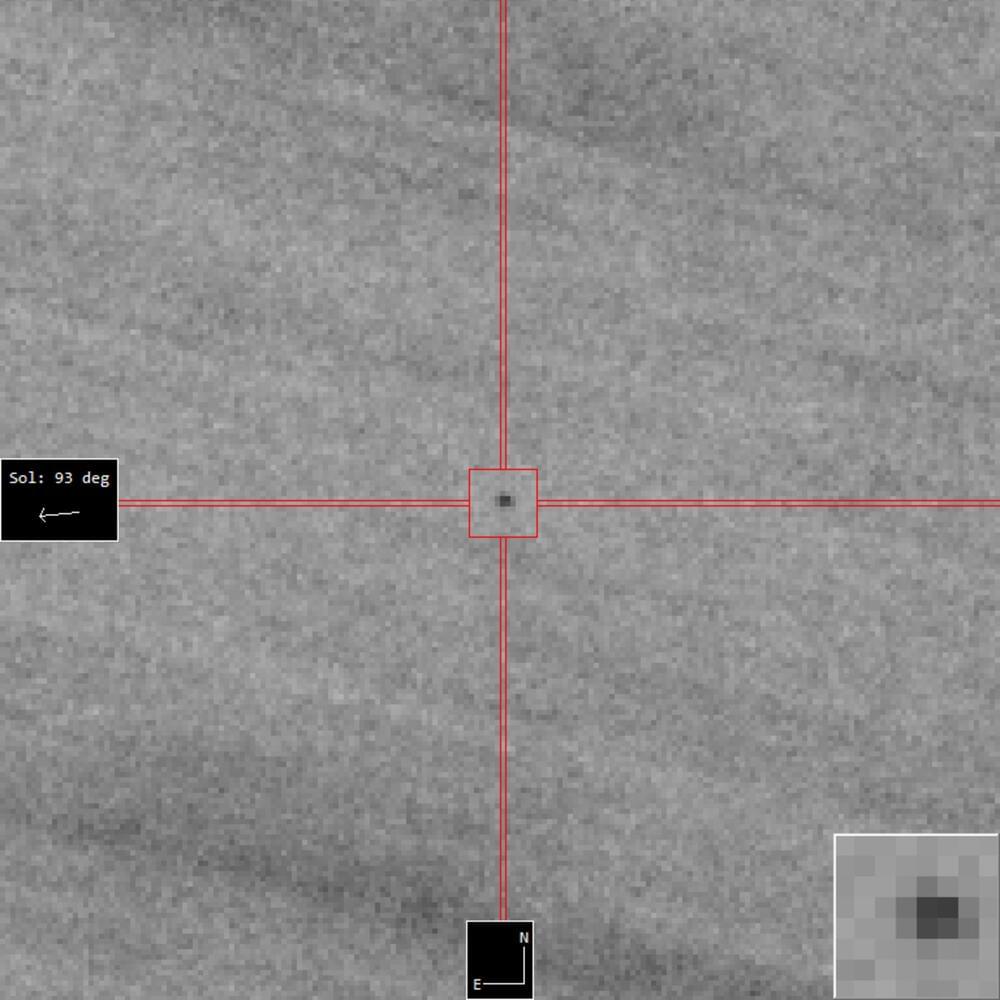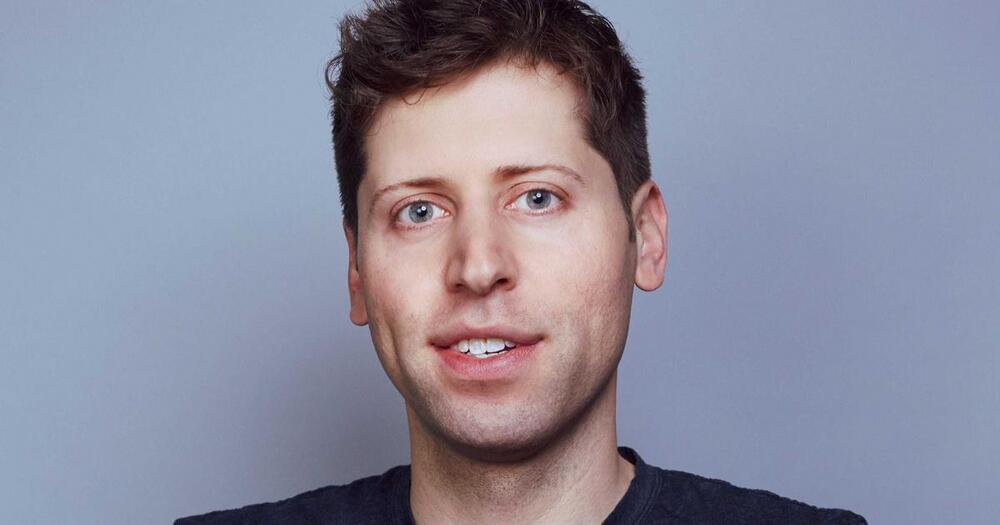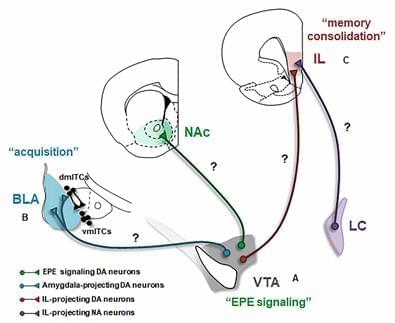By understanding how asteroids function, we can know more about how to knock them off course.
The DART mission moved an asteroid, setting the stage for planetary defense strategies that could avoid collision with more dangerous objects.
By understanding how asteroids function, we can know more about how to knock them off course.
The DART mission moved an asteroid, setting the stage for planetary defense strategies that could avoid collision with more dangerous objects.
This larger-than-expected result shows the change in Dimorphos’ orbit was not just from the impact of the DART spacecraft. The larger part of the change was due to a recoil effect from all the ejected material flying off into space, which Ariel Graykowski of the SETI Institute and colleagues estimated as between 0.3 percent and 0.5 percent of the asteroid’s total mass.
A First Success
The success of NASA’s DART mission is the first demonstration of our ability to protect Earth from the threat of hazardous asteroids.

What would we do if we spotted a hazardous asteroid on a collision course with Earth? Could we deflect it safely to prevent the impact?
Last year, NASA’s Double Asteroid Redirection Test (DART) mission tried to find out whether a “kinetic impactor” could do the job: smashing a 600kg spacecraft the size of a fridge into an asteroid the size of an Aussie Rules football field.
Early results from this first real-world test of our potential planetary defense systems looked promising. However, it’s only now that the first scientific results are being published: five papers in Nature have recreated the impact, and analyzed how it changed the asteroid’s momentum and orbit, while two studies investigate the debris knocked off by the impact.
FULL AudioBook | GreatestAudioBooks | Science Fiction / Fantasy — Early victories by the USSR in a global nuclear war cause the United Nations government to retreat to the moon leaving behind troops and fierce autonomous robots called “Claws”, which reproduce and redesign themselves in unmanned subterranean factories. After six bloody years of conflict the Soviets call for an urgent conference and UN Major Joseph Hendricks sets out to meet them. Along the way he will discover what the Claws have been up to, and it isn’t good… — Second Variety was first published in the May 1953 edition of Space Science Fiction Magazine. (Summary by Gregg Margarite)
About the Author, Philip K. Dick:
Philip Kindred Dick (December 16, 1928 – March 2, 1982) was an American writer notable for publishing works of science fiction. Dick explored philosophical, social, and political themes in novels with plots dominated by monopolistic corporations, authoritarian governments, alternate universes, and altered states of consciousness. His work reflected his personal interest in metaphysics and theology, and often drew upon his life experiences in addressing the nature of reality, identity, drug abuse, schizophrenia, and transcendental experiences.
Born in Illinois before moving to California, Dick began publishing science fiction stories in the 1950s, initially finding little commercial success. His 1962 alternate history novel The Man in the High Castle earned Dick early acclaim, including a Hugo Award for Best Novel. He followed with science fiction novels such as Do Androids Dream of Electric Sheep? (1968) and Ubik (1969). His 1974 novel Flow My Tears, the Policeman Said won the John W. Campbell Memorial Award for best novel. Following a series of religious experiences in February–March 1974, Dick’s work engaged more explicitly with issues of theology, philosophy, and the nature of reality, as in such novels as A Scanner Darkly (1977) and VALIS (1981). A collection of his non-fiction writing on these themes was published posthumously as The Exegesis of Philip K. Dick (2011). He died in 1982 of a stroke, aged 53.
In addition to 44 published novels, Dick wrote approximately 121 short stories, most of which appeared in science fiction magazines during his lifetime. A variety of popular films based on his works have been produced, including Blade Runner (1982), Total Recall (1990), Minority Report (2002), A Scanner Darkly (2006), Paycheck (2003), Next (2007), and The Adjustment Bureau (2011). In 2005, Time magazine named Ubik one of the hundred greatest English-language novels published since 1923. [6] In 2007, Dick became the first science fiction writer to be included in The Library of America series. (Summary adapted from Wikipedia.org — Attribution: https://en.wikipedia.org/w/index.php?title=Philip_K._Dick&action=history)
► For FREE SPECIAL AUDIOBOOK OFFERS & MORE:
http://www.GreatestAudioBooks.com.
► Friend Us On FACEBOOK:
The renowned physicist and science communicator, Brian Cox delves into the topic of alien life and in particular, the question about intelligent alien civilization.
With his trademark enthusiasm and engaging style, Brian Cox explores the possibility of extraterrestrial life and why we haven’t found any.
The video starts with a brief overview of what Brian Cox & astronomers call: “The Great Silence”. Cox then goes on to explain the Fermi Paradox and the Dark Forest Hypothesis, which suggest that intelligent life may be intentionally avoiding contact with other civilizations to avoid being destroyed.
Cox uses his expertise in physics and astronomy to explain how alien life may be closer than we think. Like on the surface of the red planet, Mars. He discusses the potential for life to exist in other planets because there are at least 20 billion other earth like planets in our galaxy alone.
Throughout the video, Cox provides easy-to-understand explanations, making complex scientific concepts accessible to a broad audience.
Whether you’re a science enthusiast or simply curious about the possibility of life beyond Earth, Brian Cox’s insights and knowledge are sure to captivate and inform. Don’t miss out on this thought-provoking and entertaining exploration of the universe and our place within it.
Get a Wonderful Person Tee: https://teespring.com/stores/whatdamath.
More cool designs are on Amazon: https://amzn.to/3wDGy2i.
Alternatively, PayPal donations can be sent here: http://paypal.me/whatdamath.
Hello and welcome! My name is Anton and in this video, we will talk about new explanations of the Fermi paradox focusing on the Hart Tipler Conjecture that tries to disprove the existence of extraterrestrial intelligence.
Links:
https://ui.adsabs.harvard.edu/abs/1975QJRAS…16…128H/abstract.
https://arxiv.org/abs/2301.09575
Potential other resolutions of Fermi paradox:
https://www.youtube.com/watch?v=b3xro2jHevk.
https://www.youtube.com/watch?v=k_B9YP5nEWw.
https://www.youtube.com/watch?v=b3xro2jHevk.
Hawking radiation: https://youtu.be/6h6MgvBLrxk.
Penrose process: https://youtu.be/A-WIsnoX2Uw.
0:00 Intro.
0:40 Hart-Tipler Conjecture in a nutshell.
3:40 Main criticism of this idea.
7:10 Potential conclusions.
9:00 Potential solutions from Quantum Computing.
Support this channel on Patreon to help me make this a full time job:
https://www.patreon.com/whatdamath.
Bitcoin/Ethereum to spare? Donate them here to help this channel grow!
bc1qnkl3nk0zt7w0xzrgur9pnkcduj7a3xxllcn7d4
or ETH: 0x60f088B10b03115405d313f964BeA93eF0Bd3DbF
Space Engine is available for free here: http://spaceengine.org.

For a few tense days this January, a roughly 70-metre asteroid became the riskiest observed in over a decade. Despite the Moon’s attempt to scupper observations, the asteroid is now known to be entirely safe.
*Join ESA, NASA and Asteroid Day LIVE from 19:00 CET this evening in “Killing asteroids — with the experts”, to find out more*.
Initial observations of an asteroid dubbed ‘2022 AE1’ showed a potential Earth impact on 4 July 2023 – not enough time to attempt deflection and large enough to do real damage to a local area should it strike.


An updated metric for prioritizing species’ conservation that incorporates scientific uncertainty and complementarity between species, in addition to extinction risk and evolutionary distinctiveness, has been published on February 28 in the open access journal PLOS Biology, authored by Rikki Gumbs from the Zoological Society of London (ZSL), U.K., and colleagues.
In 2007, ZSL established the Evolutionarily Distinct and Globally Endangered (EDGE) metric to prioritize species for conservation based on preserving evolutionary history embodied within endangered species. The approach allocates each species a score based on the evolutionary distance, measured in millions of years, that separates a species from its closest living relatives, and its conservation status in the IUCN Red List.
EDGE has since been applied to mammals, amphibians, birds, sharks and rays, corals, and flowering plants, and is used to allocate conservation funding. To update the EDGE metric to incorporate recent advances in evolutionary biology and conservation, ZSL hosted a workshop for conservation scientists and practitioners, who reached a consensus on EDGE2—an updated metric that includes the extinction risk of closely related species and uncertainty in species’ relationships and conservation status.

The ability to extinguish fear memories when threats are no longer present is critical for adaptive behavior. Fear extinction represents a new learning process that eventually leads to the formation of extinction memories. Understanding the neural basis of fear extinction has considerable clinical significance as deficits in extinction learning are the hallmark of human anxiety disorders. In recent years, the dopamine (DA) system has emerged as one of the key regulators of fear extinction. In this review article, we highlight recent advances that have demonstrated the crucial role DA plays in mediating different phases of fear extinction. Emerging concepts and outstanding questions for future research are also discussed.
Learning to associate stimuli and situations with danger or safety is critical for survival and adaptive behavior. In the laboratory, these forms of learning are typically studied using Pavlovian fear conditioning and extinction. Fear conditioning is an example of associative learning in which an initially neutral stimulus such as a tone (conditioned stimulus, CS) comes to elicit fear responses after being paired in time with an aversive outcome such as a foot shock (unconditioned stimulus, US). Once the CS-US association is learned, subsequently repeated presentations of the CS in the absence of the aversive US result in a gradual decrease in conditioned fear responses, a process known as fear extinction. In the last decades, fear extinction has attracted much interest in part because deficits in extinction learning are thought to underlie human anxiety disorders, such as post-traumatic stress disorder (PTSD) and phobias (Graham and Milad, 2011; Pitman et al., 2012; Craske et al.